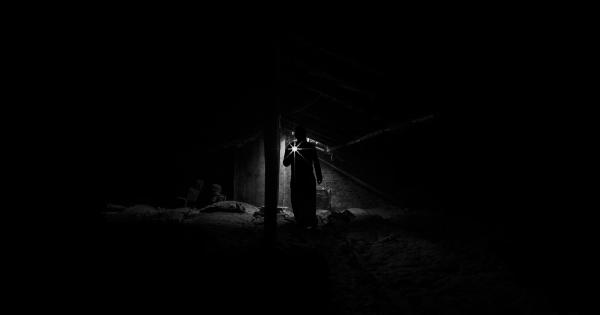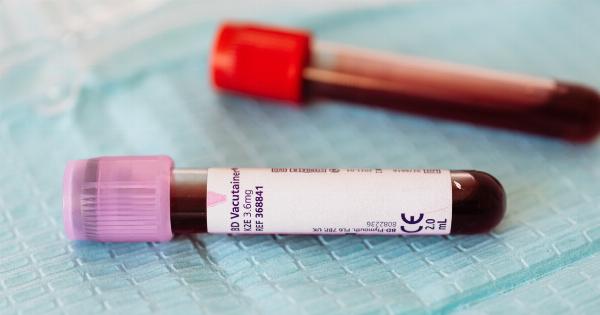Pulmonary hypertension is a serious and progressive condition that affects the blood vessels in the lungs. It is characterized by high blood pressure in the pulmonary arteries, which carry oxygen-poor blood from the heart to the lungs for oxygenation.
Over time, this increased pressure can lead to damage in the heart and lungs, resulting in serious health complications. In this article, we will explore the causes, symptoms, diagnosis, treatment, and prevention of pulmonary hypertension.
Causes of Pulmonary Hypertension
There are several possible causes of pulmonary hypertension. It can be classified into different types based on its underlying cause. Some of the most common causes include:.
1. Pulmonary Arterial Hypertension (PAH)
PAH is a relatively rare form of pulmonary hypertension that occurs when the small pulmonary arteries become narrowed or blocked. This can be due to genetic factors, certain medical conditions, or exposure to certain drugs or toxins.
2. Left-Sided Heart Disease
When the left side of the heart is unable to effectively pump blood, it can lead to a backup of blood in the lungs and increased pressure in the pulmonary arteries.
Conditions such as congestive heart failure and mitral valve disease can contribute to this type of pulmonary hypertension.
3. Lung Disease or Hypoxia
Lung diseases such as chronic obstructive pulmonary disease (COPD) and interstitial lung disease can lead to low oxygen levels in the blood, resulting in increased pressure in the pulmonary arteries.
Long-term exposure to high altitudes or conditions that cause chronic hypoxia can also contribute to this type of pulmonary hypertension.
4. Blood Clots in the Lungs
Pulmonary embolism, which occurs when blood clots travel to the lungs, can cause sudden-onset pulmonary hypertension. These clots obstruct blood flow, leading to increased pressure in the pulmonary arteries.
5. Other Causes
Other less common causes of pulmonary hypertension include genetic factors, certain autoimmune diseases, and certain medications or toxins. In some cases, the exact cause may remain unknown.
Symptoms of Pulmonary Hypertension
The symptoms of pulmonary hypertension can vary depending on the severity of the condition. In the early stages, symptoms may be mild and go unnoticed. However, as the condition progresses, the following symptoms may occur:.
1. Shortness of Breath
Shortness of breath, especially during physical activity or exertion, is a common symptom of pulmonary hypertension. As the condition worsens, shortness of breath may also occur at rest.
2. Fatigue
Many individuals with pulmonary hypertension experience persistent fatigue or weakness. This can be attributed to the increased workload on the heart and reduced oxygen supply to the body.
3. Chest Pain
Chest pain may occur as a result of the heart working harder to pump blood through the narrowed pulmonary arteries. The pain may be dull, sharp, or pressure-like.
4. Dizziness or Fainting
Reduced blood flow to the brain can lead to dizziness or fainting spells in individuals with pulmonary hypertension. These symptoms often occur with physical activity or sudden changes in position.
Diagnosing Pulmonary Hypertension
Diagnosing pulmonary hypertension typically involves a combination of medical history evaluation, physical examination, and diagnostic tests. Some common diagnostic procedures used to confirm the presence of pulmonary hypertension include:.
1. Echocardiogram
An echocardiogram uses sound waves to create images of the heart. It can help evaluate the structure and function of the heart and detect any abnormalities in the pulmonary arteries.
2. Pulmonary Function Tests
Pulmonary function tests measure how well the lungs are working. These tests can help determine the severity of lung disease and its impact on pulmonary hypertension.
3. Cardiac Catheterization
Cardiac catheterization is an invasive procedure that involves inserting a thin tube into a blood vessel and threading it to the heart. It provides detailed information about the pressures within the heart and pulmonary arteries.
Treatment Options for Pulmonary Hypertension
While pulmonary hypertension is a chronic and progressive condition, several treatment options are available to manage symptoms, slow down the progression of the disease, and improve overall quality of life. Treatment approaches may include:.
1. Medications
Various medications can help relax and expand the blood vessels in the lungs, reduce blood clot formation, and improve heart function.
Different classes of drugs, such as calcium channel blockers, prostacyclin analogues, endothelin receptor antagonists, and phosphodiesterase-5 inhibitors, may be prescribed.
2. Oxygen Therapy
Oxygen therapy may be recommended to improve oxygen levels in the blood and reduce shortness of breath. It involves using a portable oxygen concentrator or oxygen tanks to deliver supplemental oxygen.
3. Lung Transplantation
In severe cases of pulmonary hypertension, lung transplantation may be considered as a treatment option. This procedure involves replacing the diseased lungs with healthy donor lungs.
Lifestyle Modifications and Prevention
While there is no known way to prevent pulmonary hypertension, certain lifestyle modifications can help manage the condition and improve overall well-being. These include:.
1. Regular Exercise
Engaging in regular physical activity, as tolerated, can improve heart and lung function, reduce symptoms, and enhance overall cardiovascular health.
2. A Healthy Diet
Following a balanced diet that includes a variety of fruits, vegetables, whole grains, lean proteins, and healthy fats can support heart health and overall well-being.
3. Avoiding Tobacco and Alcohol
Tobacco and alcohol can further damage the heart and lungs, worsening the symptoms of pulmonary hypertension. It is important to avoid smoking and excessive alcohol consumption.
4. Regular Follow-up and Monitoring
Regular check-ups with healthcare providers and adherence to recommended treatment plans are crucial for managing pulmonary hypertension effectively.
Conclusion
Pulmonary hypertension is a progressive disease that requires early diagnosis and appropriate management to prevent further complications.
Understanding the causes, symptoms, diagnosis, treatment options, and prevention strategies can help individuals with pulmonary hypertension lead healthier lives and improve their overall well-being.



























